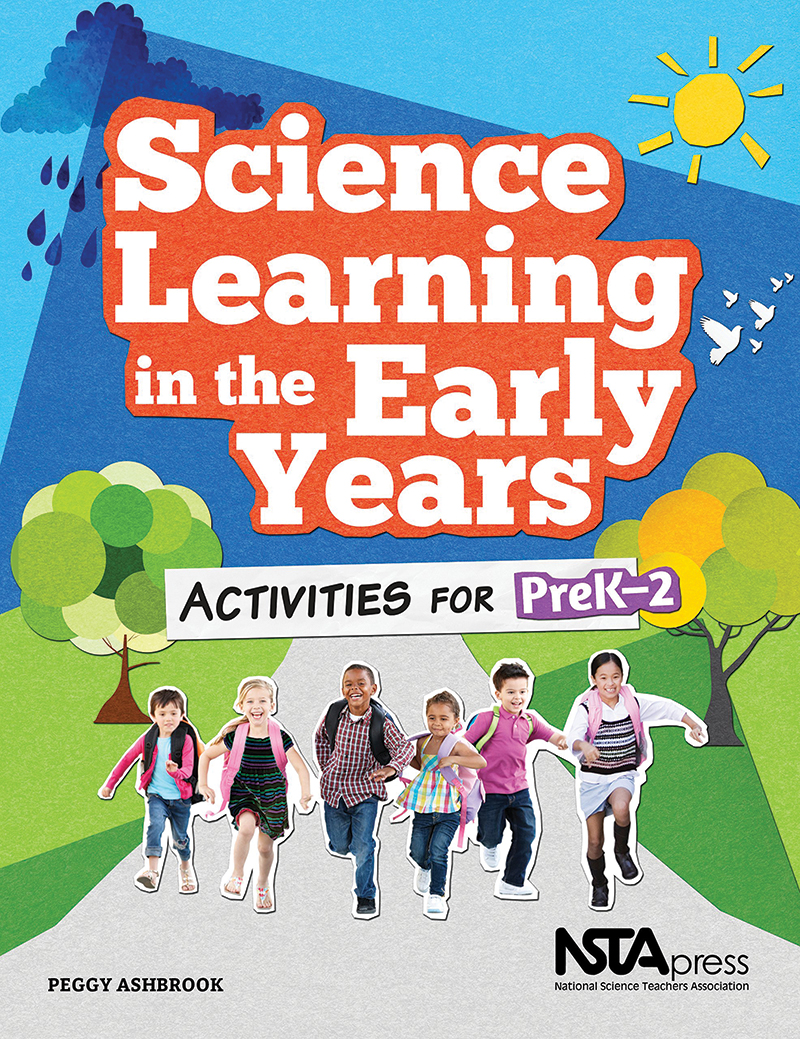Early Childhood Resources Review
Science Learning in the Early Years
Science and Children—July/August 2020 (Volume 57, Issue 9)
By Carol Bland

by Peggy Ashbrook. 2016, NSTA Press Book. $39.54.
Peggy Ashbrook’s text is a sourcebook of more than 40 activities for preK–2 teachers compiled from her monthly column in Science and Children. Ashbrook provides beginners to inquiry-based science instruction with easy-to-implement explorations that inspire children to think deeply about scientific processes. At the same time, the book offers veteran educators ideas to add to their repertoire of adventures in science. These scientific undertakings for young learners are grounded in the Next Generation Science Standards (NGSS) disciplinary core ideas and crosscutting concepts. This review focuses on Ashbrook’s emphasis on safety, highlights specific activities, notes cross-curricular connections, and shares methods for assessing student learning. Suggestions for future work are offered.
Safety considerations are outlined early in the text. Ashbrook directs her readers to online Safety Data Sheets (p. xiii) and cautions educators to follow the recommended procedures, use the suggested materials, and inform adults of all safety precautions. She promotes problem solving by giving young learners activities that require reflection, revision, and repetition. Letting children experience challenges in achieving a desired result in an emotionally safe, encouraging environment allows them to build a growth mindset when it comes to problem-solving not only in “science” but across the curriculum.
Ashbrook makes connections to language arts, math, and social studies. She incorporates language arts in “What Might Happen If…?” (p. 268). Mathematics is key in “Measuring Hands” (p. 112). Social studies are linked in “Schoolyard as Model” (p. 263). Ashbrook also describes activities for water work, cooking, gardening, and investigating animals. Each activity includes inexpensive, readily available materials, suggestions for including children’s literature, and websites that help teachers build background. In today’s standards-driven environment, it is critically important that teachers be able to justify time spent on activities that appear to step away from literacy and mathematics. This is where assessment plays a key role in the implementation of Ashbrook’s work.
Ashbrook reminds educators to know their students—where they begin in their scientific knowledge and skills, how they move through their investigations, and how students’ knowledge, skills, and perceptions of the scientific processes change over time. She omits formalized assessment instruments and instead delineates developmentally appropriate behaviors that give teachers insight into student learning. Ashbrook links these specific behaviors to scientific and engineering practices that apply across disciplines. The assessment tool she provides allows teachers to recognize and document student learning for planning and teaching purposes, for data collection to satisfy administrators, and note where additional supports may be necessary for diverse learners.
Ashbrook briefly references early childhood inclusion and encourages the reader to look to outside resources to support students with special needs, including dual language learners. Suggestions for adaptations for students with disabilities or delays would be a worthwhile addition to Ashbrook’s column and subsequent editions of this book. Another suggestion is in reference to the organization of the activities. Ashbrook makes a strong case for providing young learners with multiple experiences with every science topic but separates the topics from the activities in different parts of the text. Including the activities under the umbrella of appropriate science topics would make units of study easier to build.
Overall, Ashbrook’s text is developmentally appropriate, child-focused, teacher-friendly, and practically useful. Science Learning in the Early Years: Activities for PreK–2 is a valuable resource for inquiry-based science education in the early years.
Carol Bland (cbland@radford.edu) is an associate professor at Radford University.

